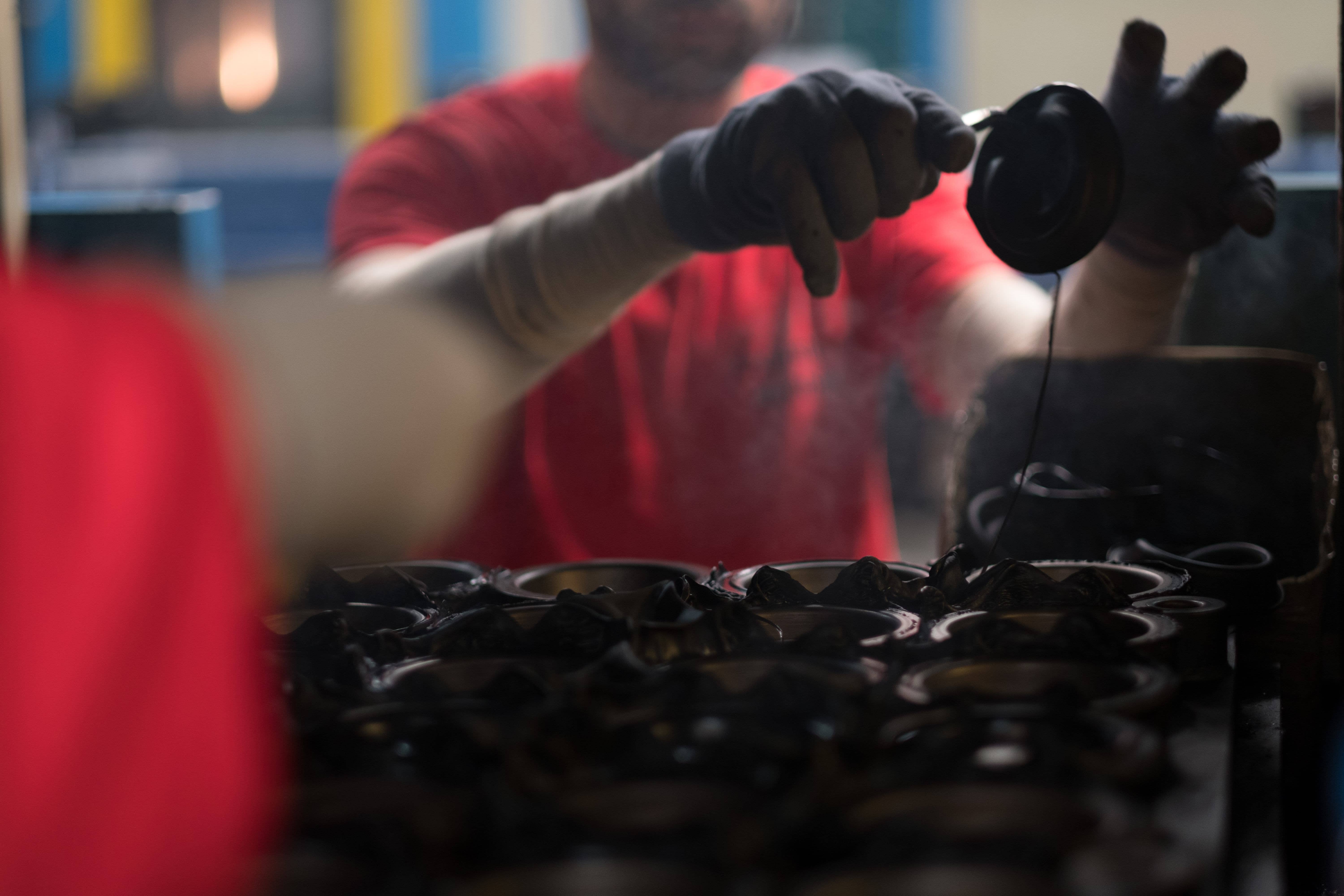Cost effective production with short setup times.
Industrial Rubber have been compression moulding since the company opened in 1975. Rubber compression moulding is a process that involves manufacturing parts from pre-formed rubber blanks using a heated tool in a hydraulic press. It can be a cost effective manufacturing process due to simple tooling required and short set up times. However, processing times can be slower and parts may require further product finishing.
The compression moulding process involves using pre-formed rubber blanks in the basic shape of the end product. The blanks provide a surplus of material to be placed in the cavity, this ensures a total cavity fill. The blank is placed in the mould cavity and the mould is closed, placed into a hydraulic press with heated platens which applies both heat and pressure to the blank which is compressed to fill the cavity. When the cavity is filled, excess material spills out or flows into overflow grooves. The cure cycle is then completed for the given time period. When the cure period is completed, the tool is removed from the press, opened and the product is de-moulded. The mould is then re-loaded with a new blank and process repeated.

Industrial Rubber have over 60 presses available for compression moulding with presses varying in pressure and pattern sizes. We compression mould parts in a whole range of polymer types and shore hardness, including exotic materials. Industrial Rubber can accommodate solid rubber compression mouldings with up to 500 tons of pressure with platen sizes 1070mm X 1070mm. We also manufacture our rubber sponge using compression moulding with presses which are capable up to 150 tons of pressure with platen sizes of 2250mm X 1250mm.